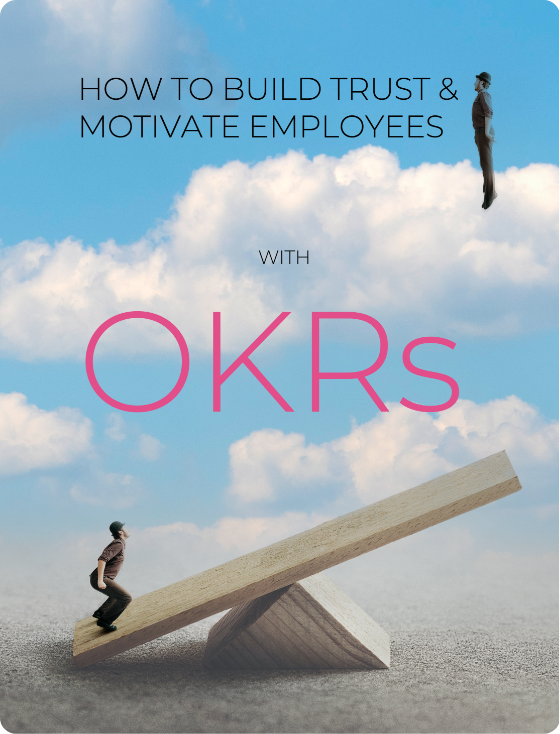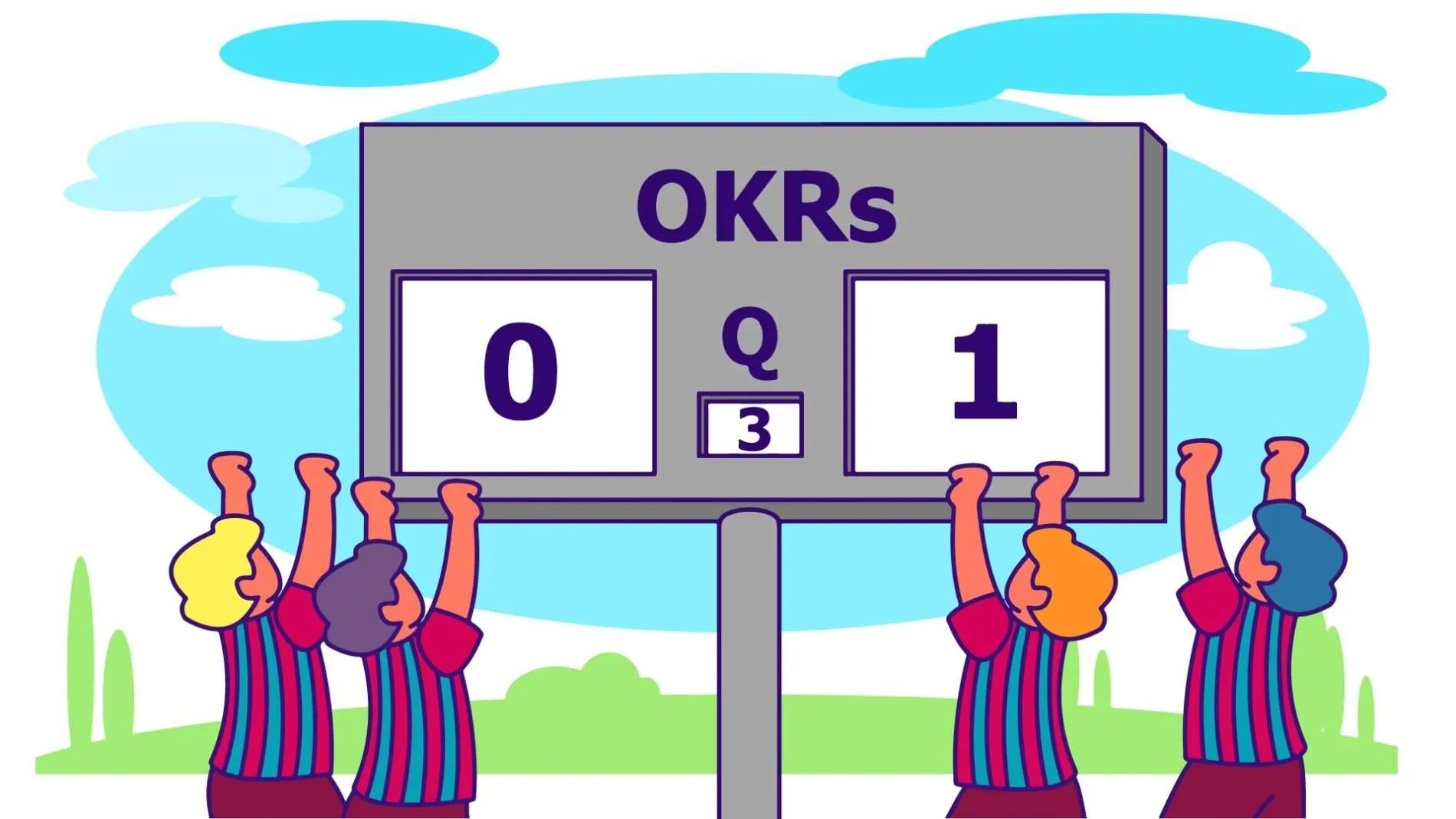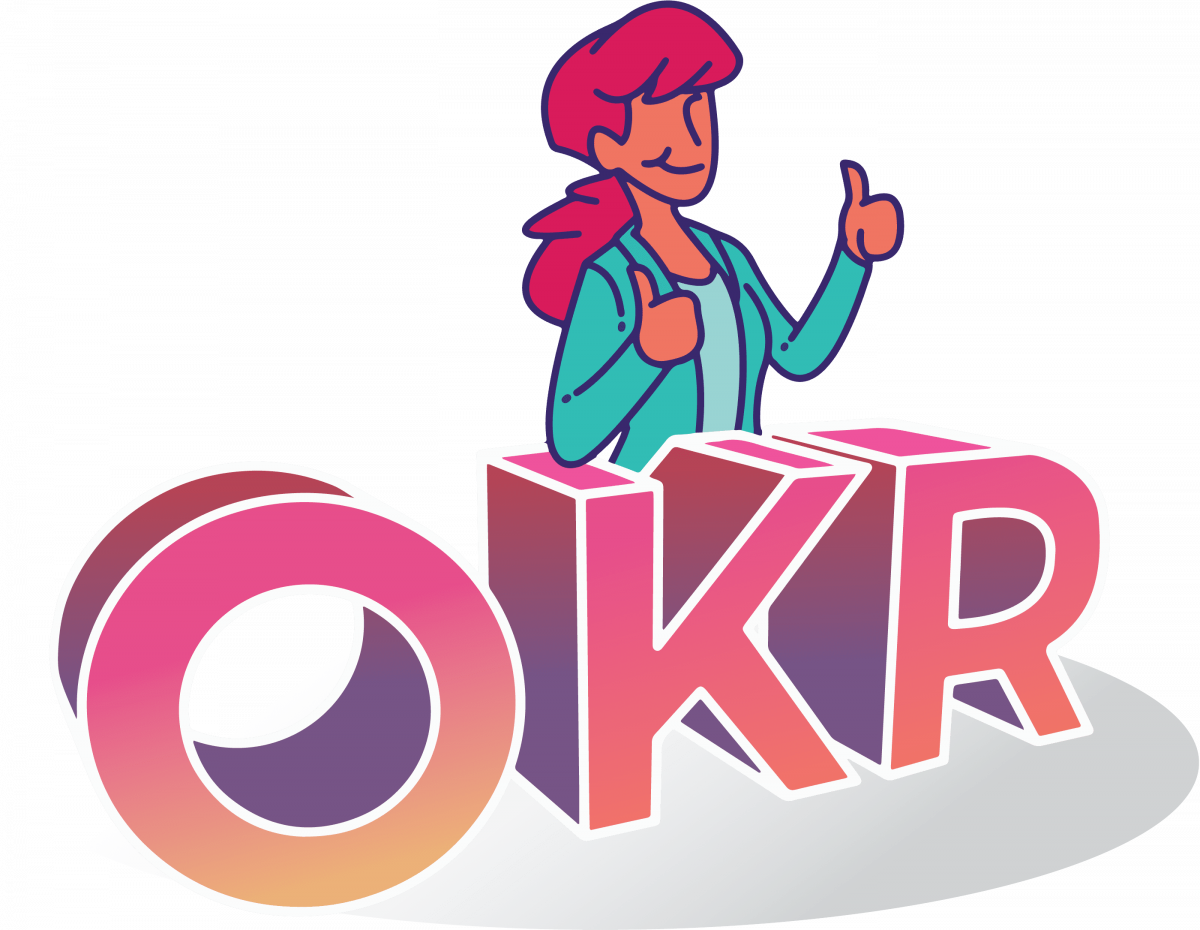SECTION
OKRs vs. Performance Management: Everything Leaders Need to Know

Listen to this article:
While OKRs and performance management are essential for organizational success, they serve distinct purposes. By understanding their unique roles, leaders can leverage both to create a well-rounded approach that drives performance and fosters development.
This article will clarify the differences between OKRs and performance management and explore how they can work together effectively. To achieve this, we will go over the following:
- The distinction between OKRs and performance management;
- How to use OKRs for performance management;
- Best practices for integrating OKRs and performance management.
What is the difference between OKRs and performance management?
OKRs focus on setting and achieving ambitious goals and providing clear and measurable outcomes. On the other hand, performance management evaluates the behaviors and outputs that drive these results, ensuring consistent and reliable performance. Let's take each concept one at a time.
Understanding OKRs
OKRs (Objective and Key Results) are a goal management framework that promotes alignment, focus, transparency, and clarity. OKRs consist of up to five objectives and five key results for each objective. Typically, OKRs are defined for a specified period, such as three months, to allow quick reaction to changes.

The OKR framework unifies everyone's efforts toward common objectives and provides a clear way forward. OKRs are comprised of:
- Objectives are the core element of OKRs and must be clear and action-oriented.
- Key results are the quantifiable step toward accomplishing the objective.
While OKRs focus on driving ambitious goals, KPIs measure ongoing performance. Understanding the difference between OKRs and KPIs is essential for organizations looking to drive both strategic growth and monitor operational efficiency. For a deeper understanding of how these two frameworks complement each other, see our article on OKR vs KPI.

Below is an example of a well-structured OKR for the HR department. Studying examples like this can provide helpful insights into how to write OKRs that are impactful and strategic.
Objective: Improve employee engagement
Key Results:
- Increase employee engagement survey participation rate from 70% to 85% by Q3
- Achieve an employee engagement score of 80% or higher in the annual survey
- Reduce voluntary turnover rate from 10% to 7% by year-end
- Implement three new engagement initiatives based on survey feedback by the end of Q3
Understanding performance management
Performance management, or PM, is the process of evaluating employee contributions to foster their growth and align their efforts to achieve the organization's goals effectively and efficiently.
Performance management's fundamental purpose is to clarify individual expectations and create clear measures of success. Moreover, performance management evaluates employees' skills, behaviors, and achievements against the organization's established expectations. This assessment helps identify areas where people excel and areas needing improvement.
👉 Learn more about the components and benefits of performance management in our articles.
OKRs vs. performance management: main differences
A company’s performance management shouldn't be entirely dictated by OKRs (and vice versa). Below are the main differences between OKRs and performance management:
Key focus: outcomes vs. behaviors
OKRs primarily focus on outcomes, defining what the organization aims to achieve and measuring success through specific, quantifiable results. In contrast, performance management emphasizes behaviors and outputs, assessing how people perform their tasks, their behavior in the workplace, and the tangible results of their efforts.
Timeframe: quarterly vs. ongoing
OKRs are typically set quarterly. This timeframe allows organizations to adapt quickly to changing circumstances and maintain momentum toward ambitious goals. On the other hand, performance management is an ongoing process. It involves continuous monitoring, feedback, and development activities throughout the year, ensuring sustained growth and alignment with long-term objectives.
Level of ambition: ambitious vs. attainable
OKRs are designed to be ambitious and stretchy. They encourage people to push beyond their comfort zones and strive for exceptional performance. This approach fosters innovation and drives significant progress. In contrast, performance management goals are generally attainable and realistic. They focus on achieving consistent, reliable performance and incremental improvement over time.
Transparency: public vs. confidential
OKRs are typically public within the organization. By openly sharing objectives and key results, companies promote transparency and alignment across teams. People can see how their work contributes to broader organizational goals. In contrast, performance management is usually confidential. Individual performance evaluations, feedback, and development plans are private and shared only between the mentee and the manager.

OKRs and performance management: a powerful combination
OKRs and performance management are not mutually exclusive but are rather complementary frameworks that, when used together, advance employee and organizational growth. While OKRs focus on setting and achieving ambitious goals, performance management provides the structure to support and evaluate the behaviors and outputs that drive these results.
Benefits of this integrated approach
OKRs can add more value to performance conversations. OKRs help employees understand what is expected of them and provide clear, objective metrics to measure their contributions. Tracking progress toward OKRs offers valuable insights into how employees advance toward their goals, allowing managers to have informed discussions about performance.
💡 TIP: Regular check-ins are essential to the success of OKRs and performance management. These meetings, ideally held quarterly or even more frequently, allow for ongoing progress tracking, goal realignment, and timely feedback.
Managers can use OKRs to evaluate growth and discuss skills demonstrated. OKRs are not just about achieving outcomes; they also highlight the behaviors and skills people show in the process, as well as their commitment to their work. Managers can use OKRs to discuss specific actions taken and problem-solving approaches, as well as display teamwork while working towards objectives. This helps identify strengths and areas for improvement and fosters a culture of continuous development.
💡 TIP: OKRs shouldn’t be the sole factor in performance reviews. Although they provide insights into people’s commitment and the quality of their work, fair evaluations should consider the entire performance history, such as received feedback and praise, career milestones, and areas of improvement.
OKRs contribute to a more continuous and growth-oriented performance management process. The combination of OKRs and performance management encourages a continuous cycle of setting, tracking, and evaluating goals. This ongoing process encourages regular feedback and development, enabling people to constantly learn and grow rather than waiting for annual performance reviews.
Best practices for integrating OKRs and performance management
Many forward-thinking companies leverage OKRs and performance management to create a holistic and integrated approach to development. Here are a few actionable tips that will help leaders have better results when combining the two frameworks:
Use OKRs to set the context for performance reviews:
- Discuss OKRs during performance check-ins to provide a structured overview of goal achievement. Use OKRs to highlight key accomplishments and areas for improvement;
- Use the 360° feedback collection method to gather perspectives from multiple sources, such as peers, mentees, and managers, to provide a well-rounded view of an employee's performance;
- Implement regular check-ins and feedback sessions focusing on OKR progress and personal development. Use these meetings to adjust goals, provide guidance, and celebrate achievements;
- Use a complete performance review software solution like Mirro to have access to performance check-ins, OKRs, feedback, and recognition in a single platform.
 See OKRs completion in performance check-ins through Mirro
See OKRs completion in performance check-ins through Mirro
Align OKRs with career development plans:
- Link individual OKRs with employees’ long-term career goals and development plans. This alignment ensures that people see the relevance of their current objectives to their overall career growth;
- Provide opportunities for people to acquire new skills and competencies that will help them achieve their OKRs and advance in their careers;
- Regularly revisit and update career development plans based on the progress and feedback received during performance check-ins.
Encourage discussions about challenges faced while pursuing OKRs:
- Create a safe space for employees to discuss the challenges and obstacles they encounter while working on their OKRs. This can uncover potential learning opportunities and areas for support;
- Use these discussions to identify systemic issues or barriers that may be hindering progress and collaboratively develop solutions;
- Recognize and reward people for their resilience and problem-solving abilities, even if they don’t fully achieve their OKRs.
Use OKRs and performance management to drive business growth
By combining OKRs and performance management, organizations can foster an environment that promotes growth, alignment, and high performance. OKRs are all about setting and achieving ambitious goals with clear and measurable outcomes. On the other hand, continuous performance management focuses on evaluating the behaviors and outputs that contribute to these results.
Regular check-ins and discussions about OKRs offer valuable insights into employee progress, highlighting both achievements and areas for improvement. Aligning OKRs with career development plans further supports individual growth and helps people see how their current objectives relate to their long-term career goals. Hopefully, this article will help you easily integrate OKRs into your existing performance management system.
Frequently Asked Questions
-
What are OKRs, and how are they different from traditional performance management?
-
Can OKRs be integrated into existing performance management frameworks, and what are the benefits?
-
How can OKRs improve employee engagement and productivity?
OKRs are a goal-setting framework that focuses on setting and achieving ambitious, measurable outcomes. They promote alignment, focus, transparency, and clarity within an organization. On the other hand, traditional performance management evaluates employee performance over the year, at the end of which the employee receives a performance appraisal. Alternatively, continuous performance management implies a more people-centric approach to performance and shorter review cycles, which go hand-in-hand with OKRs.
Yes, OKRs can be integrated into existing performance management frameworks. This integration benefits employees by improving goal clarity and ownership, enhancing alignment between individual efforts and organizational goals. Using OKRs alongside performance management allows for regular feedback and development, helping people achieve their objectives and advance in their careers.
OKRs improve employee engagement and productivity by providing clear, ambitious goals that align with the organization's strategic objectives. The clarity, transparency, and regular check-ins associated with OKRs keep people motivated and focused, fostering a sense of purpose and ownership. Additionally, the emphasis on measurable outcomes encourages people to push beyond their comfort zones and strive for exceptional performance, driving innovation and progress.





